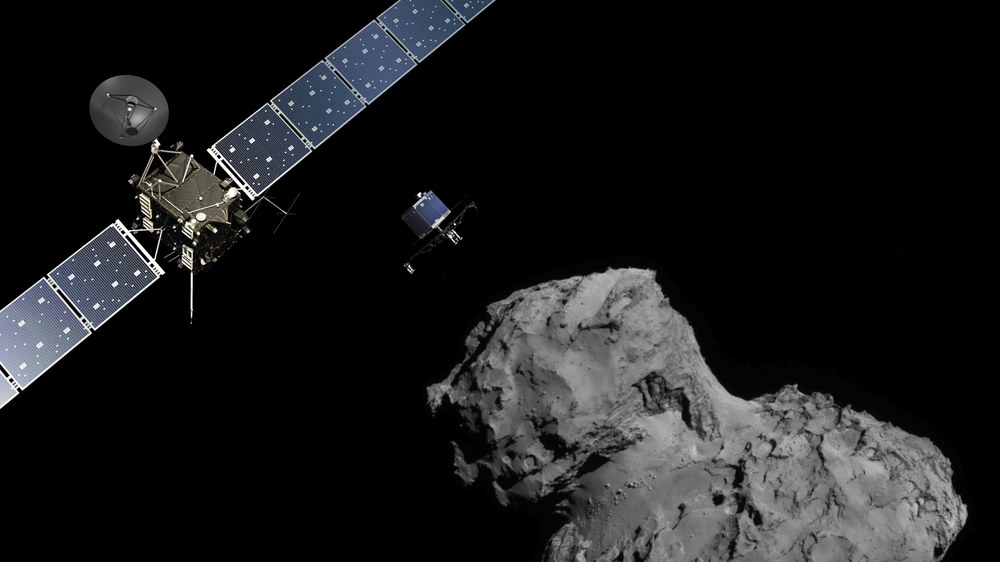Rosetta
The Rosetta mission, approved by the European Space Agency (ESA) in 1993 and launched in March 2004, was one of the most ambitious endeavours of European spaceflight. It carried 11 instruments and the Philae landing module with 10 experiments. On its route to comet 67P/Churyumov-Gerasimenko, Rosetta came close to two asteroids. In 2008 it passed (2867) Šteins and two years later (21) Lutetia. The scientific objective was to determine the exact dimensions, shape, density and properties of both asteroids.
During the early phase at 67P, in mid 2014, Rosetta orbited the cometary nucleus and mapped the surface. After a 3-month intensive campaign aimed at characterising the surface and selecting an appropriate landing site, Philae touched down on 12 November 2014 and started its measurements. Rosetta followed the comet all the way through its perihelion and back outbound again. In 2016 Rosetta was running low on fuel and it was decided to finish the mission by 'landing' the spacecraft on the surface of the comet on 30 September 2016.
DLR was involved in several experiments on the spacecraft and on the lander. For VIRTIS (Visible and Infrared Thermal Imaging Spectrometer) PF together with OS was responsible for the DPU (Digital Processing Unit) Extension Board. Additionally, PF was strongly involved in the scientific preparation of the mission and in the analysis of data from other instruments such as OSIRIS (Optical, Spectroscopic, and InfraRed Imaging System) and ROSINA (Rosetta Orbiter Spectrometer for Ion and Neutral Analysis).
Furthermore, PF was responsible for three instruments on Philae: MUPUS (Multi-Purpose Sensors for Surface and Sub-surface Science), ROLIS (Rosetta Lander Imaging System) and SESAME (Surface Electric Sounding and Acoustic Monitoring Experiment).
The sheer amount of scientific data collected by Rosetta brought us new knowledge about the chemical composition, mechanical and thermal properties of comets and about their origin and evolution.
Hardware Participation of the DLR Institute of Planetary Research
- MUPUS (Multi-Purpose Sensors for Surface and Sub-surface Science)
- ROLIS (Rosetta Lander Imaging System)
- SESAME (Surface Electric Sounding and Acoustic Monitoring Experiment)
Scientific Participation of the DLR Institute of Planetary Research
- MUPUS (Multi-Purpose Sensors for Surface and Sub-surface Science)
- ROLIS (Rosetta Lander Imaging System)
- SESAME (Surface Electric Sounding and Acoustic Monitoring Experiment)
- VIRTIS (Visible and Infrared Thermal Imaging Spectrometer)
- OSIRIS (Optical, Spectroscopic, and InfraRed Imaging System)
- ROSINA (Rosetta Orbiter Spectrometer for Ion and Neutral Analysis)

